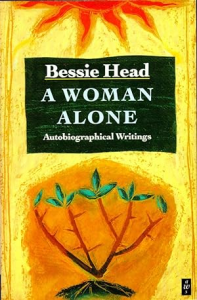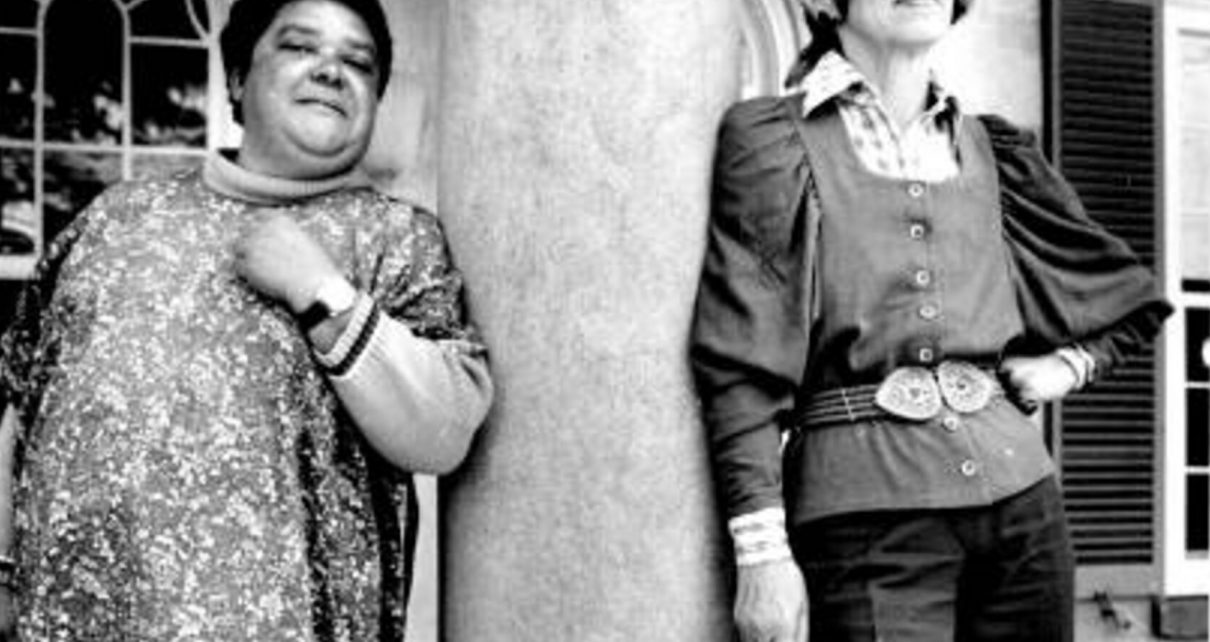Review by Olatoun Gabi-Williams

Up until “A Woman Alone”, I had not read any of Bessie Head’s books. The image I carried of one of Africa’s finest writers was not of a producer of literary works but of a mixed-race woman in a black-and-white photograph. Her swarthy face would be matronly were it not for the cigarette she is expertly smoking. It is a rough-edged, iconic image. I knew that Head was distinguished; what I didn’t know was that this distinction reached way back to the Pietermaritzburg mental hospital in which she was born in 1937; and to which her mother judged “insane”’ had been committed. The committal took place as a result of her impregnation by a stable boy. I knew very little about Bessie Emery Head.
“A Woman Alone”, like its author, is impossible to classify since it cuts across all kinds of genres. The editor of the book, Craig MacKenzie, explains that it is all: “letters, journalism, autobiography, fictional sketches, essays, forewords, explanatory notes on novels… with very few of them (fitting) wholly into any of these categories”. But do we need to classify this assembly of writings that devastate with their fierce passion and raging honesty? If they must be defined at all, it must be for the startling clarity with which Bessie Head channels her loneliness and desperate longing for wholeness, and integration. These writings are laments, her own songs calling for unity, not dislocation, harmony, not fragmentation; and peace. Head’s hero was Miriam Makeba, and she writes as Miriam Makeba sings. When she writes, “Some other world reaches you…” she means a world in which the noise of wars—race wars, independence wars, and the noise of self-serving politicians—has ceased.
In her longing, Head reaches for the jocularity of beer-swigging social groups and the bracing comfort of intellectuals. In her dreaming, Head reaches back to Africa that she cherishes which pre-existed the “miserable history of the Great Trek”; the Africa which pre-existed the savage plunder of the soil and soul of Southern Africa by the Voortrekkers with their scientific dispossession of a people who hitherto had owned vast tracts of land. A people who had known only one way of life for millennia; known it with the certainty of religion printed not in Christian bibles but etched on the tablets of their hearts.
Homogeneity is discussed explicitly in key sections of the book. And where it isn’t explicit, Head evokes it nowhere more engagingly than in her narration of the tight community life of District 6, Cape Town. Of South Africa’s cities, it is Cape Town that can offer simple people, like the “packing hand” in her story, the uniformity that is the bedrock of village life and which the villager prizes above all things. What can be more comforting than being surrounded by faces whose “specialness” reflects his own? “…those faces swear with the exact same nuance he does. They eat the exact same food. They have the exact same humour. Why go to a fool place called Durban?” Geographic or figurative, “elsewhere” is not for the villager: “He just doesn’t have the kind of pretentiousness that makes an American tourist come and gape at the Zulu dances.”
This insularity finds its fullest expression in the British Protectorate of Bechuanaland. In 1964, Bessie Head, one of those activists who refused to call the white man “Baas” goes there seeking refuge from all that has made her – like innumerable others, “perplexed, bewildered, and desperate”. To find peace and friendship, to find “hallowed ground”, she retreats to the village of Serowe, a “quiet backwater” in the country that became Botswana. Here, in Serowe, she can “dream dreams a little ahead of the…clamour of revolution and the horrible stench of evil social systems”.
All about her, intact, is Bechuanaland’s ancient history. Bechuanaland was fortunate to have been too poor and dreary a place to merit the trampling and pillaging typical of colonialism. In the history of this indigenous kingdom, it is not the British overlord but Khama III who, between 1875 and 1923, looms large and majestic. A Christian convert, his progressive reforms point to a democratic and humane future for Bechuanaland. Before Khama III, the Bechuana women were chattel silenced and exploited by the commercial practice of bogadi which he abolished; Before Khama III women were beasts of burden oppressed by the physicality of tasks left them by absent husbands. No longer: from the time of Khama the Great, women “could lodge complaints against their husbands on their own and not through a male sponsor, as was required by custom”. With a view to recalling the dignity of the ancient kingdom and reminding us that “Before the British were, our African kings were”, Bessie Head takes great pride in recounting the exploits of Khama the Great.
Ancient Africa, with her “quiet, unassertive grandeur,” is a sprawling canvas painted by God. Out of this canvas stare Africa’s people; they wear “abstraction” and a “quiet absent-mindedness” for expression. Contrasting her own experience of statelessness and her fugitive condition, Head marvels at these pictorial figures: only a profound certainty of their belonging to the soil and to its history can produce stillness like this.
But there is a serpent in paradise: while acknowledging that the joy of recognition provides a compelling justification for social uniformity, Head has learned to question the viability of the homogeneity that traditional societies boast and the “transfused religion” at their heart. How viable is a social model that upholds nothing greater than an endless cycle of routine grind and exalts no greater idea than the demands of nature? Can it sustain the people? Prepare them for crises? Head writes of the “… terrible mindlessness about it…There must be other ingredients boiling in the pot…Under the deceptive peace around us, we are more easily confused and torn apart than those with the capacity to take in their stride the width and the reach of new horizons.”
Another spanner in the working of Head’s village utopia which takes up a key part of the book is institutionalised racism. She explores the visceral origins of Apartheid and discovers that it is none other than the “fear of a new thing” which besets all racial groups particularly those who inhabit villages. It is this fear that divides Serowe into 2 camps at the presence in their midst of an African American woman with forthright, exotic ways. It is this fear of the other that changes the mind of the “packing hand” in her story who had wanted to leave Cape Town for a short visit to Durban.
Bessie Head was to live her latter years in the village of Serowe. In 1986, at the age of 49, she was to die there. Yes, she does openly acknowledge ironies, poisoned arrows undercutting her worldview which extolls the virtues of poverty and the simple village life but those ironies change nothing. On the contrary: a “pail of water”, presented to her with heart-stopping grace earns on page 61 a powerful eulogy to the village of Serowe. This is indeed “hallowed ground” and divinity suffuses Head’s message of thanks.
I will end my review with Bessie Head’s triumphant declaration to the people who gave her the precious gift of water and to the people of the world.
“…Tell them how natural, sensible, normal is human kindness. Tell them, those who judge my country, Africa, by gain and greed, that the gods walk about her barefoot with no ermine and gold-studded cloaks”.
Reviewer: Olatoun Gabi-WilliamsTitle: A Woman AloneFormat: 107 pages, PaperbackPublished: October 11, 1990 by Heinemann Educational BooksISBN: 9780435905781 (ISBN10: 0435905783)*Language: English



